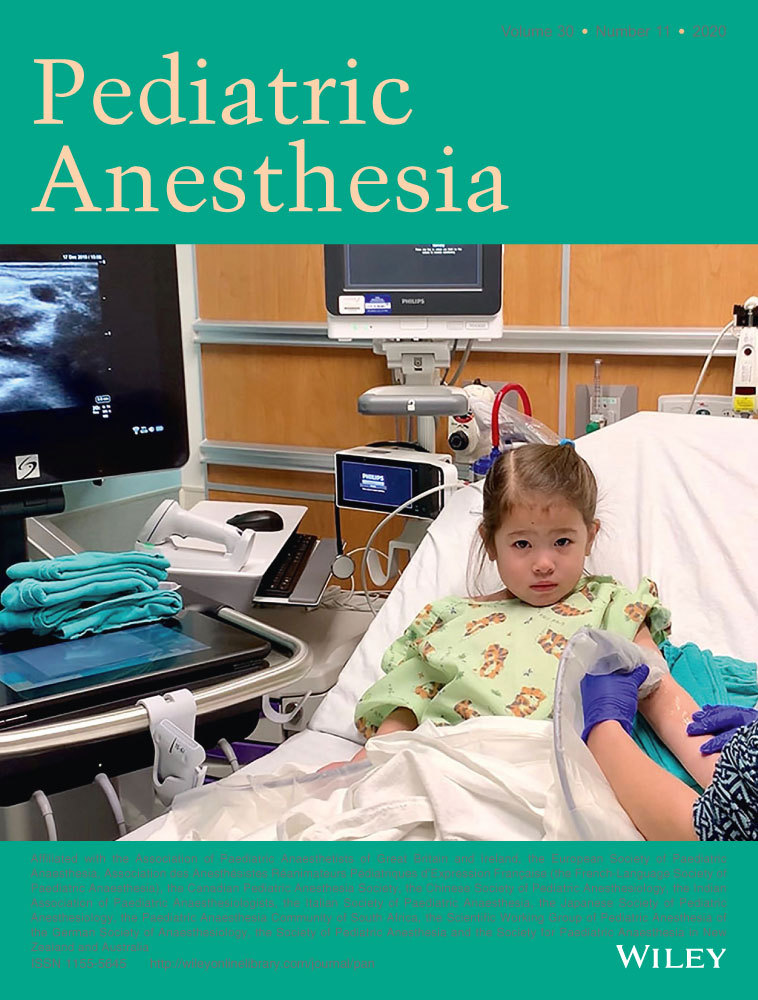Infant peripherally inserted central catheter insertion without general anesthesia
Abstract
Background
Avoiding anesthesia for infant peripherally inserted central catheter insertion beyond the neonatal period has been the subject of very little research despite this being a high-risk age group. In our institution, we introduced a “Fast, Feed, and Wrap” technique, previously described for magnetic resonance imaging scans, for infants up to 6 months and weighing under 5.5 kg undergoing peripherally inserted central catheter insertion.
Aims
The aim was to report our experience using “Fast, Feed, and Wrap,” in particular the success rate and proportion of qualifying infants who were managed this way.
Methods
A retrospective study was undertaken using electronic records and case notes to determine patient age, weight, indication for procedure, anesthetic technique (general anesthesia or “Fast, Feed, and Wrap”), peripherally inserted central catheter details (site of insertion, gauge, and number of lumens), and length of procedure.
Results
Fifty-one infants qualified for “Fast, Feed, and Wrap” over a 42-month period, 43 were attempted this way and 40 were successful. All infants were greater than 40 weeks postconceptual age at the time of peripherally inserted central catheter insertion under “Fast, Feed, and Wrap,” though 26% were preterm. The average age of babies undergoing “Fast, Feed, and Wrap” was 35 days (IQR 18-55), and the median weight was 3.78 kg (IQR 3.48-4.77).
Conclusions
Infants younger than 6 months and under 5.5 kg can be managed without general anesthesia for peripherally inserted central catheter insertion using a Fast, Feed, and Wrap technique.




